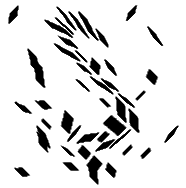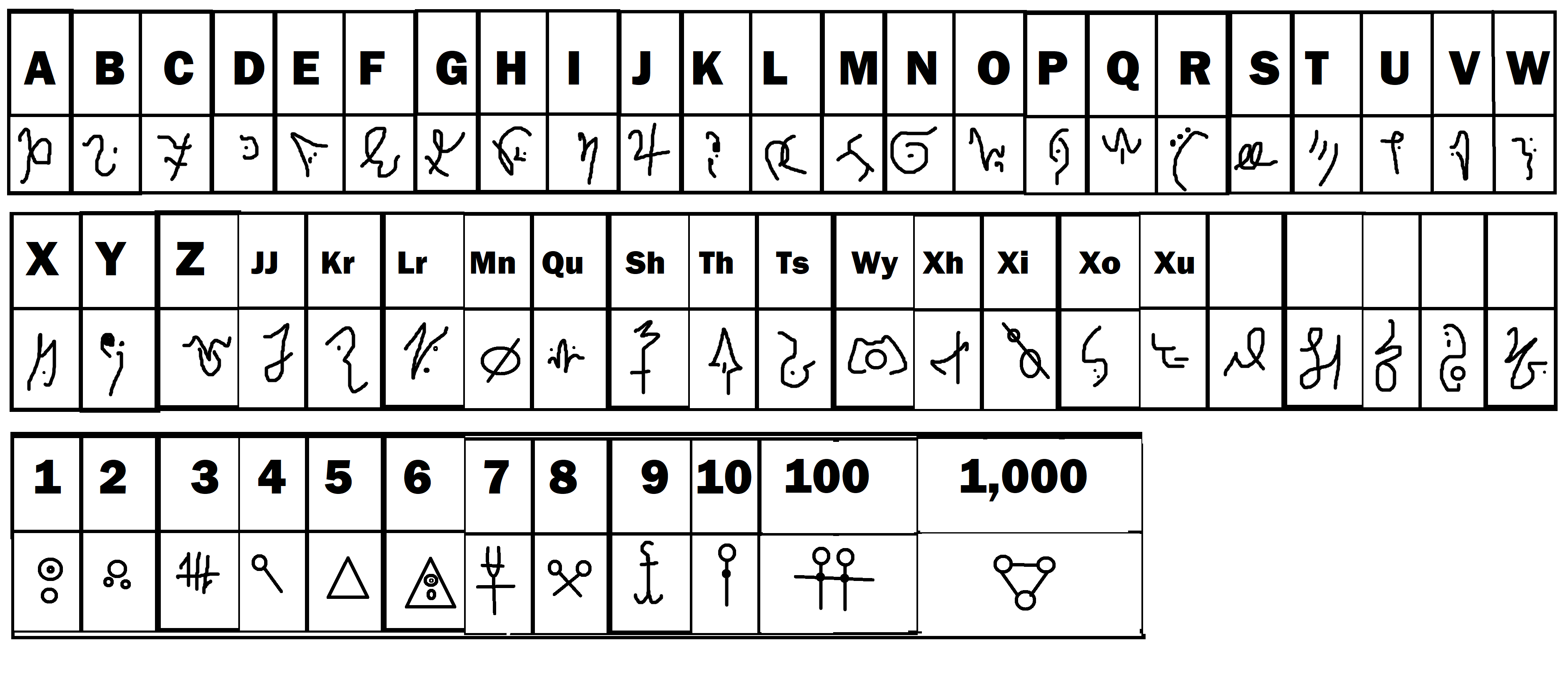Languages (Shard Ne'Vaal Supplement)
The world prior Shard Ne'Vaal had far less fragmented dialogues. There were people across the world who generally spoke some deviation of Common, which descended from the ancient language of Reth. After the world was shattered, tribalism and its tendencies resulted in a loss of some tongues and the birth of others as people redefined themselves in the crisis whilst others died, taking their language with them. For the most part, all inhabitants can be assumed to speak some form of Common in the civilized areas. But these have become few and far between in a broken world.
Reth, the Ancient Language[edit]
It is believed that in primordial times, Reth was the language of men and the gods alike. Reth is basically equivalent to Supernal, from which all languages derive from later. Today it is a dead language used only by archaeologists or learned peoples in a trade. It is used in codes sometimes but otherwise enjoys little utility. Few in Shard Ne'Vaal remember it.
Common[edit]
The written language of Common in Shard Ne'Vaal remains virtually the same from the days before the Gorge. It was developed from the old script of Reth. But with globalization, an extra few letters and characters were added to accommodate for special sounds in other languages. Despite the fragmented society, Common remains the lingua franca across the shards. However, the spoken portion of the language has diversified immensely, hampering communications in some respects. Thus, Common ceases to be one single language, and becomes an overarching category over several language-like dialects, defined as "classes".
Compare the relative cohesion of Common before and after the Gorge. The notes are present to help with roleplaying in these dialects, nothing more.
| Language | Areas Spoken | Notes |
|---|---|---|
| Dominus Class | North/Center Bevel, Center/East Himmländ, Sarushian Isles | Something like British English |
| Aersarian Class | South Bevel, West Dasoon | Something like American English |
| Cezares Class | Center/East Dasoon | Something like Scottish |
| Suprese Class | Okut | Something like Australian |
| Grejaran Class | West Himmländ | Something like Irish |
| Language | Areas Spoken | Notes |
|---|---|---|
| Dominus | Center/SE Ytel Shard | British English |
| Aversar | West Macar Shard | South African English |
| Ersayr | West Ytel and East Ensen | Germanic English |
| Chellis | Durenshi | American English |
| Bargari | North Durenshi and Alei | Spanish English |
| Dagnort | North Yralis | Celtic English |
| Beffellin | Fair Shards | West Indian English |
| Suprese | Shomba | French English |
| Soresin | North Bisquot | Scottish English |
| Grijot | Tors | Australian English |
Secondary Languages[edit]
The following languages are used within segments of society from cultural roots. These groups are sizable enough to constitute a living language.
Dwarvish and Giant[edit]
Hocheim's old dwarven, giant and orc populations have thus scattered in the wake of the Gorge. However, their languages remain as they do, and can be found on multiple shards. Orcs in this setting speak Giant, and often populate the trunk and root levels. Giants have become more reclusive, receding to live only in reminiscent mountain ranges like that of Ytel and Macar. The language of Giant uses their own unique runic writing system known as Dethek. Dwarvish uses this writing system as well, but with a few tweaks of their own.
Shou[edit]

|
|---|
| Shou calligraphy |
Ba Xin's core language is considered one of the first human languages to come out of Reth. Shou is a logographic language constructed of characters which carry meanings within themselves, rather than within a series of words constructed by letters. The construction of each character's sound and meaning are completely separate, making it a difficult language to learn. A phonetic syllabary exists for native speakers, made of purely phonetic logographs. A separate syllabary in Common exists to help foreigners learn the language's pronunciation. But the character's meanings matter little with the sound, and are constructed in a modular fashion, with associated logographs being added in the form of radicals. the more complex a character becomes, the more specific the meaning. This has significantly hampered the spread of Shou, and it remained popular only on Dasoon. In Shard Ne'Vaal, it is found mostly on the Durenshi shard, with sprinklings in Macar and Shomba.
- Orientation and Characters
Shou and its derivative languages largely read from right to left. A lot of the scrolls are written with strips of text going from up and down, though this is not a given. There are said to be around 100,000 characters in all of the language. 10,000 of these are for pure poetry and therefore unknown to most laymen and unused for daily life. The form of these characters is unique but malleable, which is where the art of calligraphy comes in.
Wa-an and Koryo[edit]
Toryu and Jjan use a form of decreased Shou. Wa-an and Koryo are languages with heavy influences from the people of the Karas Plains. They have their own alphabets which are incremental, unlike that of Shou, but they borrowed about 20,000 characters to express different ideas. Wa-an follows the same orientation as Shou, but Koryo is read left to right.
Elvish[edit]
Dead Languages[edit]
The following languages have very little use and are quickly on the verge of extinction save some special cases in Shard Ne'Vaal. Prior to the Gorge, they likely enjoyed much more widespread popularity. Players still have the option of knowing them, but they may swap them out as a race choice during the creation process.
Supernal[edit]
Primordial[edit]
Quori[edit]
Role-Playing Examples[edit]
There are mannerisms of speech that can help augment the player experience common in Shard Ne'Vaal and the Old World. Some are cultural and restricted by region, like some idioms. Here are just a few:
So long as Yros does shine...
- This is a common saying across most of the world. Its meaning is one of eternity, as Yros has shone before and after the Gorge. Basically, some things never change.
The monkey is wise only so much as his reflection.
- An old saying from Ba Xin, this idiom refers to a short story about a monkey who mistook his own reflection for a rival. Regardless to say, that monkey was not very smart. This phrase is usually said on the side to spite someone who may be arrogant about their knowledge.
Where the moon hides its face, the night of Ragtha sees.
- This is a saying from south Bevel with slight variations among the nations there. It alludes to how anything hidden is usually seen by something, and all things concealed will eventually be revealed.
| Shard Ne'Vaal Campaign Settingv | ||||||||
|---|---|---|---|---|---|---|---|---|

|
Players' Handbook | Races, Languages, Classes, Backgrounds, Themes, Magic, Psionics, Religion, Literature, Legends and Lore | ||||||
| Shard Ne'Vaal Crash Course | History, Geography, Climate, and the World, Bestiary, Flora, Factions, Calendar and Holidays, Cosmology and the Planes, Politics and Law | |||||||
| Dungeon Master's Guide | About, Items of Legend, Campaign Ideas, Consumables, Sample Places, NPCS, Variant Rules | |||||||
| ||||||||
Back to Main Page → 4e Homebrew → Campaign Settings → Shard Ne'Vaal
